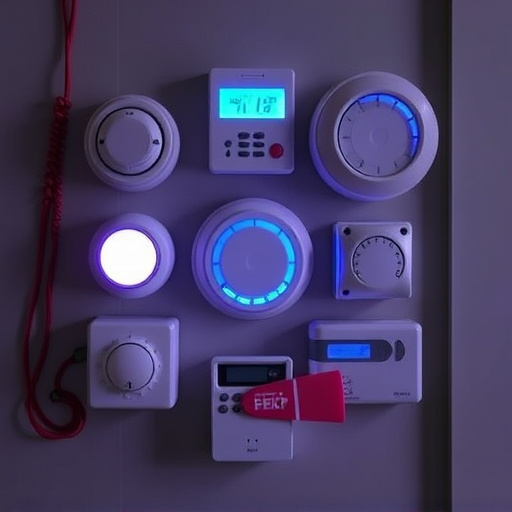Seniors can enhance their safety and independence with wearable security alarms, featuring adjustable personal alarm distance ranges from 300 to 1500 feet (or 50-1000 meters). These devices, often GPS-enabled, offer swift assistance even in remote areas. Key features include easy use, automatic fall detection, water resistance, and loud sirens, connected via cellular or Wi-Fi networks. Understanding the Personal Alarm Distance Range Comparison is crucial for selecting an appropriate device that ensures help can be called from both indoor and outdoor settings, especially for those with memory loss or dementia who may wander. Regular charging and familiarization with features are essential for effective use.
“With an increasing focus on senior safety, wearable security alarms have emerged as a vital tool for ensuring their well-being. This article explores the unique needs of seniors and how personalized alarm devices can provide much-needed peace of mind. We delve into key features to look for, comparing distance ranges for effective communication. From understanding user requirements to practical installation tips, this guide ensures seniors and their loved ones make informed decisions about wearable alarms.”
- Understanding the Needs of Seniors and Wearable Alarms
- Key Features to Consider in Personal Alarm Devices
- Comparing Distance Ranges: Ensuring Effective Communication
- Safety and Peace of Mind: Installing and Using Senior Alarms Effectively
Understanding the Needs of Seniors and Wearable Alarms
Seniors have unique needs when it comes to personal safety, and wearable security alarms offer a convenient and discreet solution. Understanding these needs is crucial in designing effective alarm devices. As people age, mobility and independence can be affected, leading to potential risks such as falls or medical emergencies. Wearable alarms cater to this demographic by providing an easy-to-carry, always-on solution that allows seniors to maintain their active lifestyles while ensuring prompt assistance in case of need.
When considering wearable alarms, the personal alarm distance range is a key factor. Comparisons between different devices show varying capabilities, with some offering extensive ranges up to 1000 meters. This feature ensures that even if a senior falls or encounters an emergency far from home, help can be summoned swiftly. Such alarms often incorporate GPS for accurate location tracking, further enhancing their effectiveness in emergency situations.
Key Features to Consider in Personal Alarm Devices
When choosing a wearable security alarm for seniors, several key features stand out. First and foremost, ease of use is paramount; simple and intuitive design ensures quick activation in case of an emergency, even for those with limited mobility or cognitive abilities. Another crucial aspect is the personal alarm distance range—the area where the device can trigger assistance. Comparisons between models often reveal ranges from 300 to 1500 feet, offering varying levels of protection depending on the user’s needs and living environment. Some advanced devices also feature automatic fall detection, which can alert emergency services without manual intervention.
Additionally, connectivity options like cellular networks or Wi-Fi integration enable direct communication with response centers, ensuring faster assistance. Water resistance is another beneficial feature, especially for those leading active lifestyles or residing in damp environments. Loudness levels should not be overlooked; a powerful siren ensures the alarm is heard even in noisy surroundings. Finally, battery life and rechargeability play a vital role in ensuring the device remains operational when needed most.
Comparing Distance Ranges: Ensuring Effective Communication
When considering wearable security alarms for seniors, one critical factor is understanding the personal alarm distance range comparison. Not all devices offer the same reach, and this can significantly impact effective communication during an emergency. Some alarms have a limited range of just a few meters, which may be sufficient for close monitoring within a home but could leave users at risk when outdoors or in larger living spaces.
On the other hand, more advanced models boast longer ranges, often extending to hundreds of meters, ensuring seniors can access help even if they wander beyond familiar territories. A broader personal alarm distance range allows for better connectivity and peace of mind, especially for those with memory loss or dementia who may not always stay within close proximity.
Safety and Peace of Mind: Installing and Using Senior Alarms Effectively
For seniors, ensuring safety and maintaining a sense of independence are paramount. Wearable security alarms offer a practical solution, providing peace of mind for both the wearer and their loved ones. These devices are designed to be easily operated, allowing seniors to quickly signal for help in an emergency. When choosing a senior alarm, understanding the personal alarm distance range is crucial. Different models offer varying ranges, from 300 feet to over 1000 feet, ensuring coverage within or beyond the typical home environment.
Effective use involves keeping the device charged and readily accessible. Seniors should familiarize themselves with the alarm’s features, including activation methods and signal transmission. Regular testing and practice can ensure the alarm responds as intended when needed. A personal alarm with a good distance range offers not just a safety net but also empowers seniors to live their lives without constant worry, allowing them to focus on enjoying their golden years.
Wearable security alarms for seniors offer a crucial solution for maintaining their safety and independence. By understanding their unique needs, considering key features like easy operation and long-range communication, and ensuring proper installation, these devices can provide peace of mind for both seniors and their loved ones. A thorough Personal Alarm Distance Range Comparison is essential to selecting the best fit, allowing seniors to live actively while staying connected and protected.
